- Home
- Victor Hugo
Les Misérables, v. 1/5: Fantine Page 8
Les Misérables, v. 1/5: Fantine Read online
Page 8
CHAPTER VI.
BY WHOM THE HOUSE WAS GUARDED.
The house the Bishop resided in consisted, as we have said, of a groundfloor and one above it, three rooms on the ground, three bed-rooms onthe first floor, and above them a store-room. Behind the house wasa quarter of an acre of garden. The two females occupied the firstfloor, and the Bishop lodged below. The first room, which opened onthe street, served him as dining-room, the second as bed-room, thethird as oratory. You could not get out of the oratory without passingthrough the bed-room, or out of the bed-room without passing throughthe sitting-room. At the end of the oratory was a closed alcove with abed, for any one who stayed the night, and the Bishop offered this bedto country cur?s whom business or the calls of their parish brought toD----.
The hospital surgery, a small building added to the house and built ona part of the garden, had been transformed into kitchen and cellar.There was also in the garden a stable, which had been the old hospitalkitchen, and in which the Bishop kept two cows. Whatever the quantityof milk they yielded, he invariably sent one half every morning to thehospital patients. "I am paying my tithes," he was wont to say.
His room was rather spacious, and very difficult to heat in the coldweather. As wood is excessively dear at D----, he hit on the ideaof partitioning off with planks a portion of the cow-house. Here hespent his evenings during the great frosts, and called it his "winterdrawing-room." In this room, as in the dining-room, there was noother furniture but a square deal table and four straw chairs. Thedining-room was also adorned with an old buffet stained to imitaterosewood. The Bishop had made the altar which decorated his oratory outof a similar buffet, suitably covered with white cloths and imitationlace. His rich penitents and the religious ladies of D---- had oftensubscribed to pay for a handsome new altar for Monseigneur's oratory;each time he took the money and gave it to the poor. "The finest of allaltars," he would say, "is the soul of an unhappy man who is consoledand thanks God."
There were in his oratory two straw priedieus, and an arm-chair, alsoof straw, in his bed-room. When he by chance received seven or eightpersons at the same time, the Prefect, the General, the staff of theregiment quartered in the town, or some pupils of the Lower Seminary,it was necessary to fetch the chairs from the winter drawing-room, thepriedieus from the oratory, and the easy chair from the bed-room: inthis way as many as eleven seats could be collected for the visitors.At each new visit a room was unfurnished. It happened at times thatthere would be twelve; in such a case the Bishop concealed theembarrassing nature of the situation by standing before the chimney ifit were winter, or walking up and down the room were it summer.
There was also another chair in the alcove, but it was half robbed ofthe straw, and had only three legs to stand on, so that it could onlybe used when resting against a wall. Mlle. Baptistine also had in herbed-room a very large settee of wood, which had once been gilt andcovered with flowered chintz, but it had been necessary to raise thissettee to the first floor through the window, owing to the narrownessof the stairs: and hence it could not be reckoned on in any emergency.It had been Mlle. Baptistine's ambition to buy drawing-room furnitureof mahogany and covered with yellow Utrecht velvet, but this would havecost at least 500 francs, and seeing that she had only succeeded insaving for this object 42 francs 5 sous in five years, she gave up theidea. Besides, who is there that ever attains his ideal?
Nothing more simple can be imagined than the Bishop's bed-room. Along window opening on the garden; opposite the bed, an iron hospitalbed with a canopy of green serge; in the shadow of the bed, behind acurtain, toilet articles, still revealing the old elegant habits of theman of fashion; two doors, one near the chimney leading to the oratory,the other near the library leading to the dining-room. The librarywas a large glass case full of books; the chimney of wood, painted toimitate marble, was habitually fireless; in the chimney were a pairof iron andirons ornamented with two vases, displaying garlands andgrooves which had once been silvered, which was a species of episcopalluxury; over the chimney a crucifix of unsilvered copper fastened tothreadbare black velvet, in a frame which had lost its gilding; nearthe window was a large table with an inkstand, loaded with irregularlyarranged papers and heavy tomes; before the table the straw arm-chair;in front of the bed a priedieu borrowed from the oratory.
Two portraits, in oval frames, hung on the wall on either side ofthe bed. Small gilded inscriptions on the neutral tinted ground ofthe canvas by the side of the figures indicated that the portraitsrepresented, one the Abb? de Chaliot, Bishop of St. Claude; the otherthe Abb? Tourteau, Vicar-general of Agde, and Abb? of Grand Champs,belonging to the Cistertian order in the diocese of Chartres. TheBishop, on succeeding to the hospital infirmary, found the picturesthere and left them. They were priests, probably donors,--two motivesfor him to respect them. All he knew of the two personages was thatthey had been nominated by the King, the one to his bishopric, theother to his benefice, on the same day, April 27, 1785. Madame Magloirehaving unhooked the portraits to remove the dust, the Bishop found thiscircumstance recorded in faded ink on a small square of paper whichtime had turned yellow, and fastened by four wafers behind the portraitof the Abb? of Grand Champs.
He had at his window an antique curtain of heavy woollen stuff, whichhad grown so old that Madame Magloire, in order to avoid the expenseof a new one, was obliged to make a large seam in the very middle ofit. The seam formed a cross, and the Bishop often drew attention toit. "How pleasant that is," he would say. All the rooms in the house,ground floor and first floor, were white-washed, which is a barrack andhospital fashion. Still, some years later, Madame Magloire discovered,as we shall see further on, paintings under the white-washed paper, inMlle. Baptistine's bed-room. The rooms were paved with red bricks whichwere washed every week, and there were straw mats in front of all thebeds. This house, moreover, managed by two females, was exquisitelyclean from top to bottom. This was the only luxury the Bishop allowedhimself, for, as he said, "It takes nothing from the poor." We mustallow, however, that of the old property there still remained sixsilver spoons and forks and a soup-ladle, which Madame Magloire dailysaw with delight shining splendidly on the coarse white table-cloth.And as we are here depicting the Bishop of D---- as he was, we mustadd that he had said, more than once, "I do not think I could give upeating with silver." To this plate must be added two heavy candlesticksof massive silver, which the Bishop inherited from a great-aunt. Thesebranched candlesticks each held two wax candles, and usually figured onthe Bishop's chimney. When he had any one to dinner, Madame Magloirelit the candles and placed the two candlesticks on the table. There wasin the Bishop's bed-room, at the head of his bed, a small cupboard inthe wall, in which Madame Magloire each night placed the plate and thelarge ladle. I am bound to add that the key was never taken out.
The garden, spoiled to some extent by the ugly buildings to which wehave referred, was composed of four walks, radiating round a cesspool;another walk ran all round the garden close to the surrounding whitewall. Between these walks were four box-bordered squares. In three ofthem Madame Magloire grew vegetables; in the fourth the Bishop hadplaced flowers; here and there were a few fruit-trees. Once MadameMagloire had said, with a sort of gentle malice, "Monseigneur, althoughyou turn everything to use, here is an unemployed plot. It would bebetter to have lettuces there than bouquets." "Madame Magloire," theBishop answered, "you are mistaken; the beautiful is as useful as theuseful." He added, after a moment's silence, "More so, perhaps."
This square, composed of three or four borders, occupied the Bishopalmost as much as his books did. He liked to spend an hour or twothere, cutting, raking, and digging holes in which he placed seeds.He was not so hostile to insects as a gardener would have liked.However, he made no pretensions to botany; he was ignorant of groupsand solidism; he did not make the slightest attempt to decide betweenTournefort and the natural method; he was not a partisan either ofJussieu or Linn?us. He did not study plants, but he loved flowers. Hegreatly respected the professors, but
he respected the ignorant evenmore; and without ever failing in this respect, he watered his bordersevery summer evening with a green-painted tin pot.
The house had not a single door that locked. The door of thedining-room, which, as we said, opened right on the cathedral square,had formerly been adorned with bolts and locks like a prison gate.The Bishop had all this iron removed, and the door was only haspedeither night or day: the first passer-by, no matter the hour, had onlyto push it. At the outset the two females had been greatly alarmedby this never-closed door; but the Bishop said to them, "Have boltsplaced on the doors of your rooms if you like." In the end they sharedhis confidence, or at least affected to do so: Madame Magloire alonewas from time to time alarmed. As regards the Bishop, his idea isexplained, or at least indicated, by these three lines, which he wroteon the margin of a Bible: "This is the distinction: the physician'sdoors must never be closed, the priest's door must always be open." Onanother book, entitled "Philosophy of Medical Science," he wrote thisother note: "Am I not a physician like them? I also have my patients:in the first place, I have theirs, whom they call the sick, and then Ihave my own, whom I call the unhappy." Elsewhere he also wrote: "Do notask the name of the man who seeks a bed from you, for it is before allthe man whom his name embarrasses that needs an asylum."
It came about that a worthy cur?--I forget whether it were he ofCouloubroux or he of Pompierry--thought proper to ask him one day,probably at the instigation of Madame Magloire, whether Monseigneurwas quite certain that he was not acting to some extent imprudently byleaving his door open day and night for any who liked to enter, andif he did not fear lest some misfortune might happen in a house sopoorly guarded. The Bishop tapped his shoulder with gentle gravity, andsaid to him, "Nisi Dominus custodierit domum, in vanum vigilant quicustodiunt eam."
Then he spoke of something else. He was fond of saying too, "There isthe Priest's bravery as well as that of the Colonel of Dragoons. Theonly thing is that ours must be quiet."

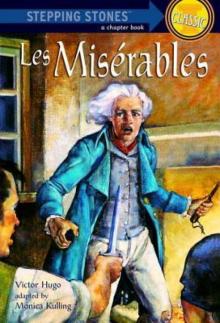 Les Miserables
Les Miserables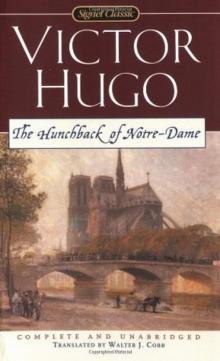 The Hunchback of Notre-Dame
The Hunchback of Notre-Dame The Man Who Laughs
The Man Who Laughs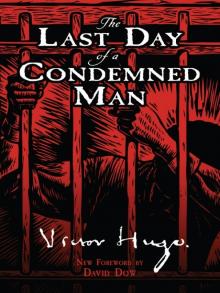 The Last Day of a Condemned Man
The Last Day of a Condemned Man The Toilers of the Sea
The Toilers of the Sea Waterloo
Waterloo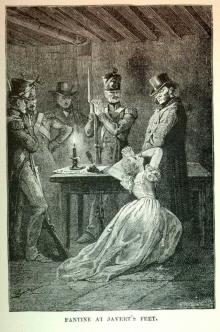 Les Misérables, v. 1/5: Fantine
Les Misérables, v. 1/5: Fantine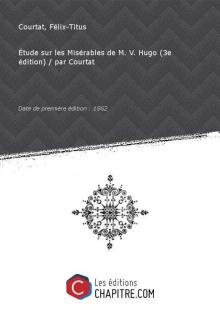 Les Misérables, v. 3/5: Marius
Les Misérables, v. 3/5: Marius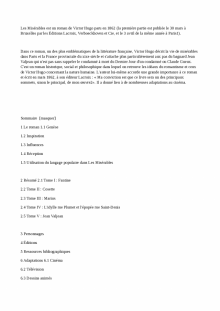 Les Misérables, v. 2/5: Cosette
Les Misérables, v. 2/5: Cosette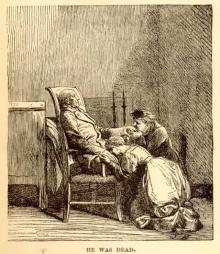 Les Misérables, v. 5/5: Jean Valjean
Les Misérables, v. 5/5: Jean Valjean Hunchback of Notre Dame (Barnes & Noble Classics Series)
Hunchback of Notre Dame (Barnes & Noble Classics Series)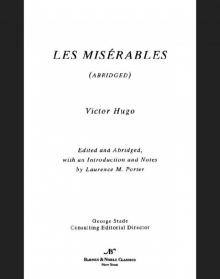 Les Miserables (abridged) (Barnes & Noble Classics Series)
Les Miserables (abridged) (Barnes & Noble Classics Series)